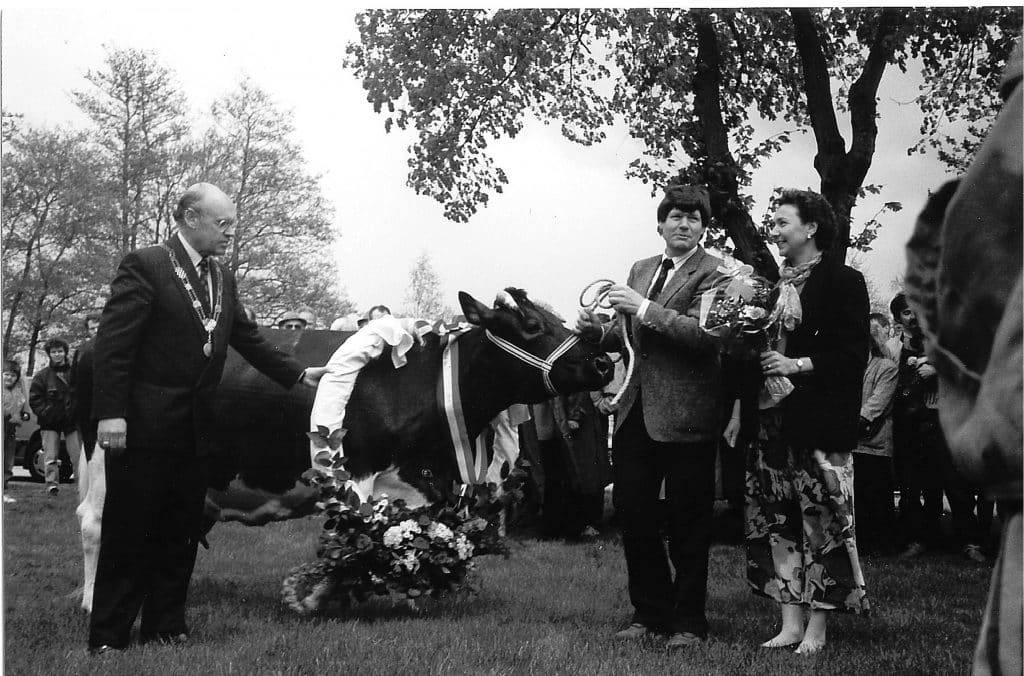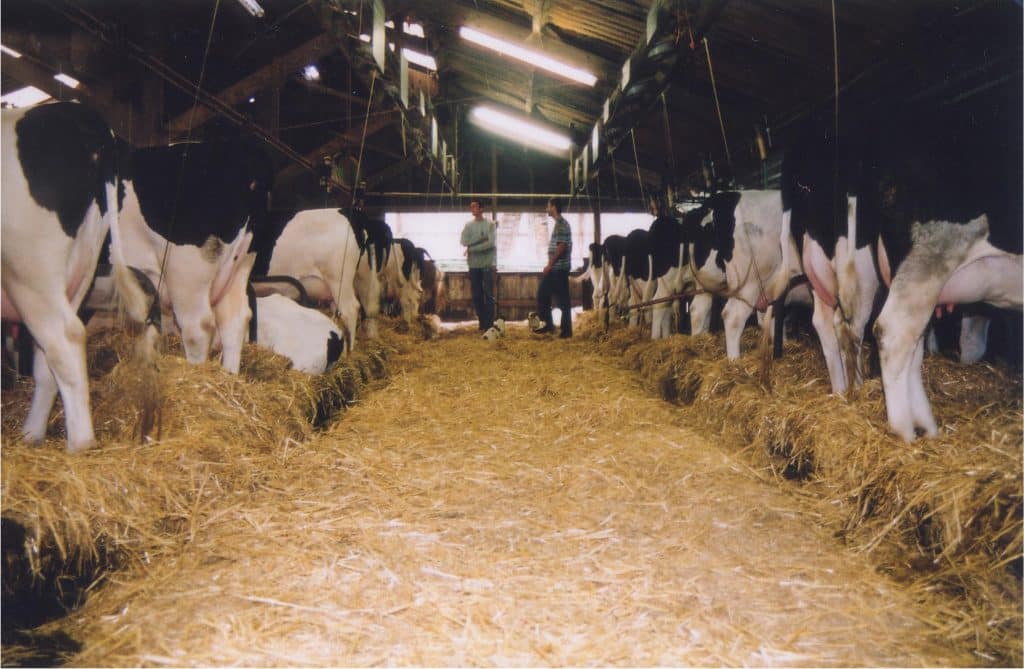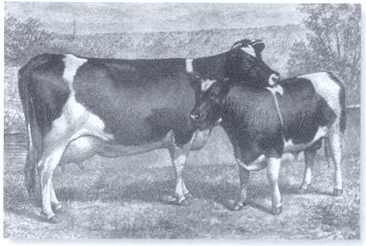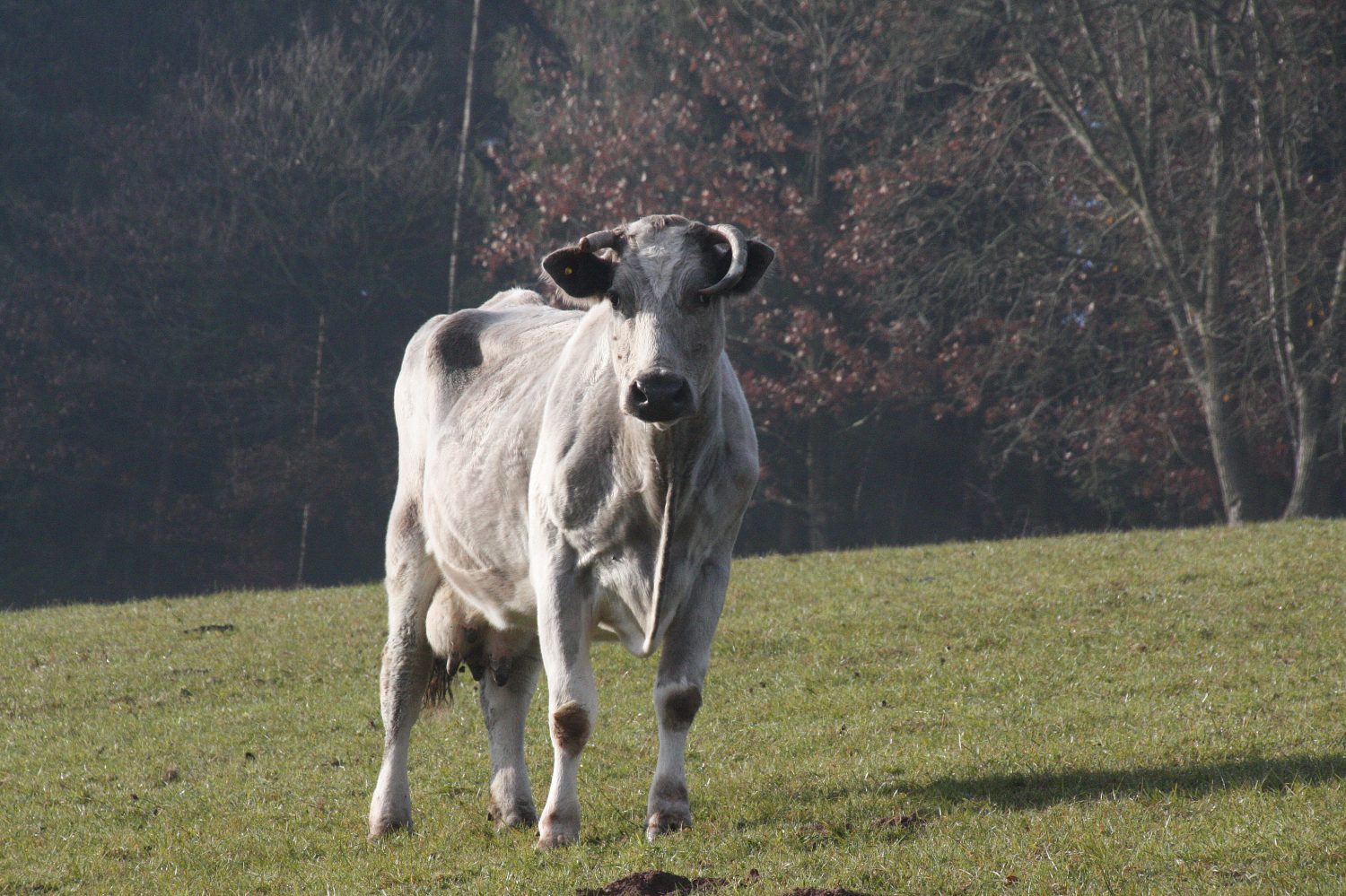The so-called ‘Blue Zones’ around the world (including Okinawa (Jp), Sicily (It), Costa Rica (Central America) are home to above-average numbers of older people. They are called Centenarians (over 100-year-olds). This is an intriguing phenomenon with the question, ‘what is the lifestyle of these local groups of people that makes them survive, stay healthy and grow old’? While it is difficult to pinpoint a single phenomenon, one sees characteristics in diet, such as low meat, high omega-3 and socially, the over 100-year-olds appear to be well embedded in their environment and families.
Old dairy cows
When you look for the Centenarians among cows, you come across a combination of genetics and environment/ husbandry/ feed. A dairy cow can become more than 25 years old, but the average cow does not survive more than 2-3 lactations, i.e. becomes between 4 and 5 years old. Veterinarian/ geneticist Frederik Bakels (died in 2000) wanted to do things differently and set up a breeding programme for cows selected for high lifetime production? Longevity as a breeding goal rather than early peak production followed by a short life as a dairy cow (Bakels and Postler, 1986; Haiger, 1991).
Bakels discovered cow herds in the US in the 1960s, with a high number of older dairy cows based on a high lifetime production. Lifetime production is defined as the summed milk yield over a cow’s lactations. Often used as a standard is the concept of the 100,000 kg cow, a cow that produces more than 100 tonnes of milk in her entire productive life. Some decades ago, cows still needed over 15 lactations (of about 7,000 kg/lactation) to achieve this, today there are cows with much higher production, which can reach this in less than 10 lactations. Both results are top achievements, but it remains more impressive when the cow combines a high age with such a high lifetime production. After all, this means that the cow really is still fertile into old age, has a well-functioning udder and stays well on her legs and claws. The cell count, as a measure of clinical and subclinical udder inflammation, must remain in limits, otherwise the farmer would have decided to have the cow slaughtered earlier. In short, a vital cow.
The beauty of the concept of lifetime production is the selection on the oldest survivors in the herd, animals that showed, that they stayed healthy. Bakels left it up to the cow whether she was big or small, but gradually some characteristics of this type of cows became clear. They were cows with a weak, arched back (not a straight back), the udder was balloon-shaped (not a long front udder), and hard, strong feet. They are easy, supple runners. Moreover, late bloomers (the first calving at an age of 3 years), which had low milk yield in the 1st lactation, then break open in later lactations. Bakels called the 1st lactation a ‘training lactation’. Nowadays, and for economical reasons cows are instead selected for a high milk yield in the 1st lactation, even usually as early as the 1st 100 days. Bakels also did not select on fat or protein contents in the milk, he left it up to the cow. Modern Holstein cows, however, are nowadays selected for the highest possible solids in their milk. Finally, Bakels adhered to the so-called gender dimorphism: milk should come from the female animal, meat from the males. This meant that he did not like to see a dairy cow being small, beefy and round.

Top breeders even in the 1960s in the US often kept their cows in a barn, tethered. So too in the barn of the Dutch FH breeder Dirk Endendijk, who produced at least five 100,000 kg cows (Baars, 1991; Endendijk et al., 2001). From the point of view of animal ethics nowadays, cows want to be able to move freely in a loose-housing barn. Still, the tied barn was not so bad when it came to longevity. Especially on those tied barns, where cows could lay down in thick layer of straw, where they could lie wide left and right. Those animals achieved very high lifetime productions due to comfort of the bedding as well as a total lack of competition in feeding. After all, each animal was fed individually.

Why a longer cow life?
Bakels defined the characteristic features of the cow: a walking animal, a ruminant and a mammal. You should add to this, that the cow is also a herd animal, living in stable groups. Cows can recognise up to about 70-100 conspecifics and know the ranking when they meet. By forced selection of too many animals each year, your herd may be completely renewed in practically three years. A replacement rate of up to 30-35% per year is accepted in modern animal husbandry. When cows are given the opportunity to grow old, the replace level is much lower and can drop below 15%. For the herd, this means that animals can stay together longer, enjoying their mother-daughter-aunt connections. Then the herd becomes a family, especially if one or more bulls are also allowed to mix among the cows. You can strengthen this even further by rearing the calves you want to keep togheter with their mothers, a system referred to as ‘calves-at-foot’ or ‘rearing-to-the (foster) mother’. Centenarians provide bonding in a herd.

Literature
- Baars T. (1990). Dirk Endendijk – 21 jaar familiteelt 1967-1988. Louis Bolk Institute, Driebergen
- Bakels F. and Postler G. (1986) Grundlagen einer Rinderzucht auf Lebensleistung. In: Ökologische Tierhaltung, Alternative Konzepte 53, Verlag C.F. Müller, Karlsruhe, Germany, 81-88
- Endendijk D., Baars T. and Endendijk H. (2001) Family breeding at Rivelinohoeve. In: Hovi M. and Baars T. (eds) Breeding and feeding for health and welfare in organic farming. 4th NAHWOA Workshop, Wageningen, The Netherlands, 35-43
- Haiger A. (1991) Ecological animal breeding: dairy cattle as example. In: Boehncke E. and Molkenthin V. (eds) Proceedings of the international conference on altenatives in animal husbandry, University of Kassel, Witzenhausen, Germany, 61-70
Foto: Roosje as a 17 year old cow




